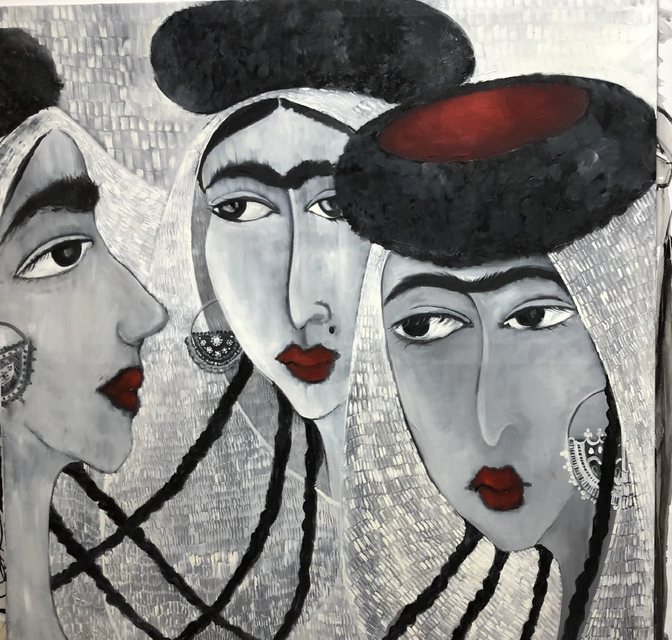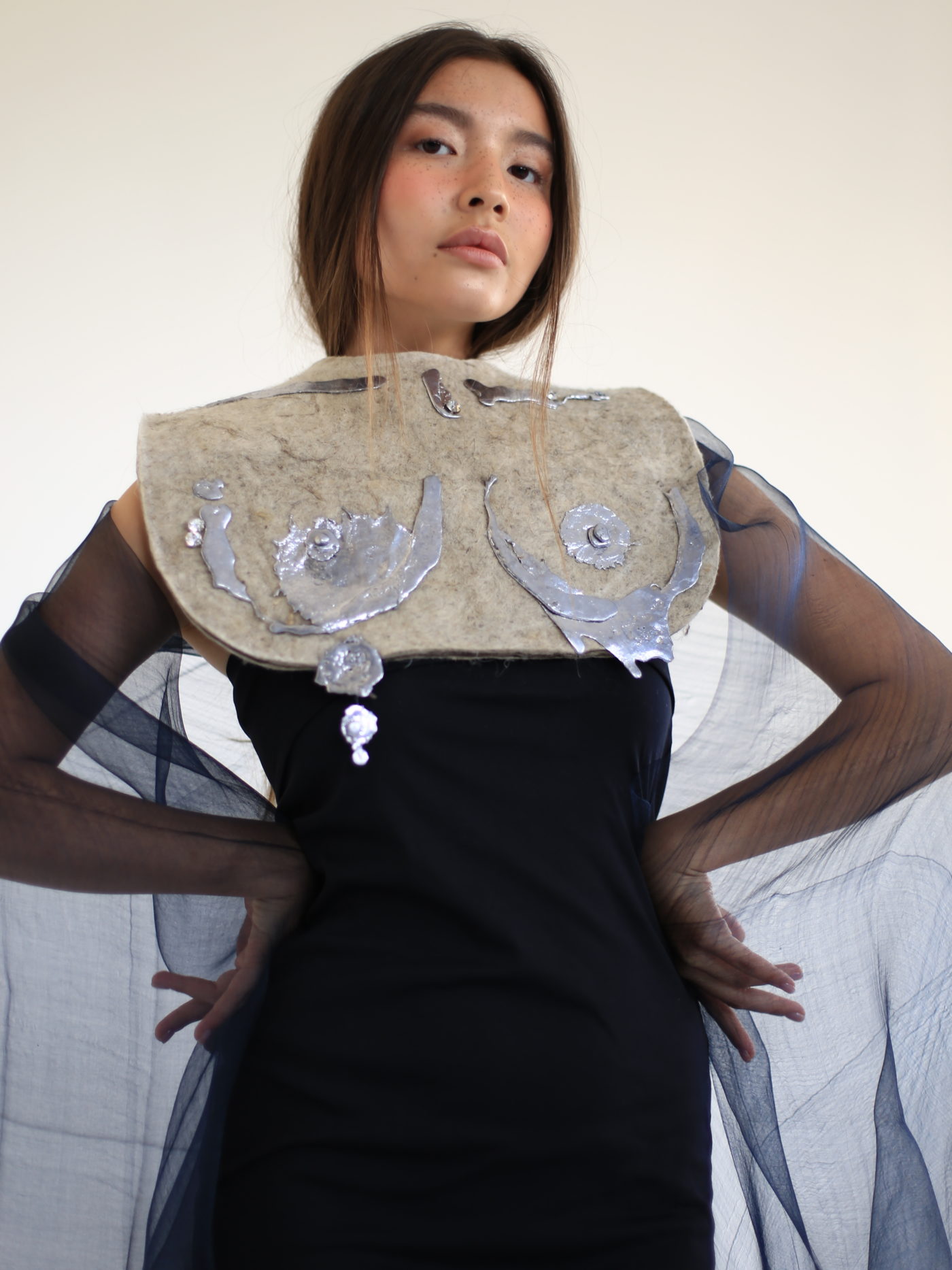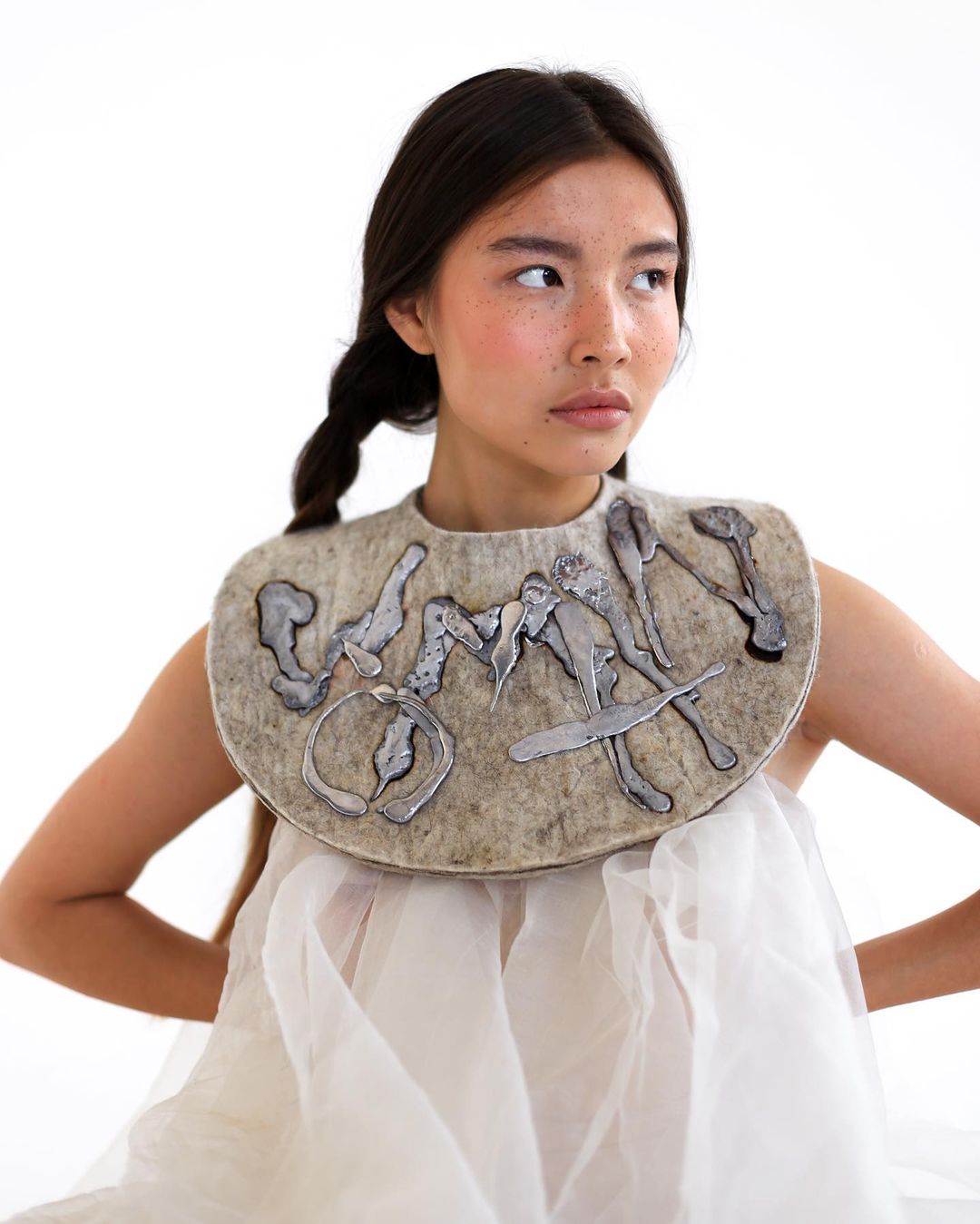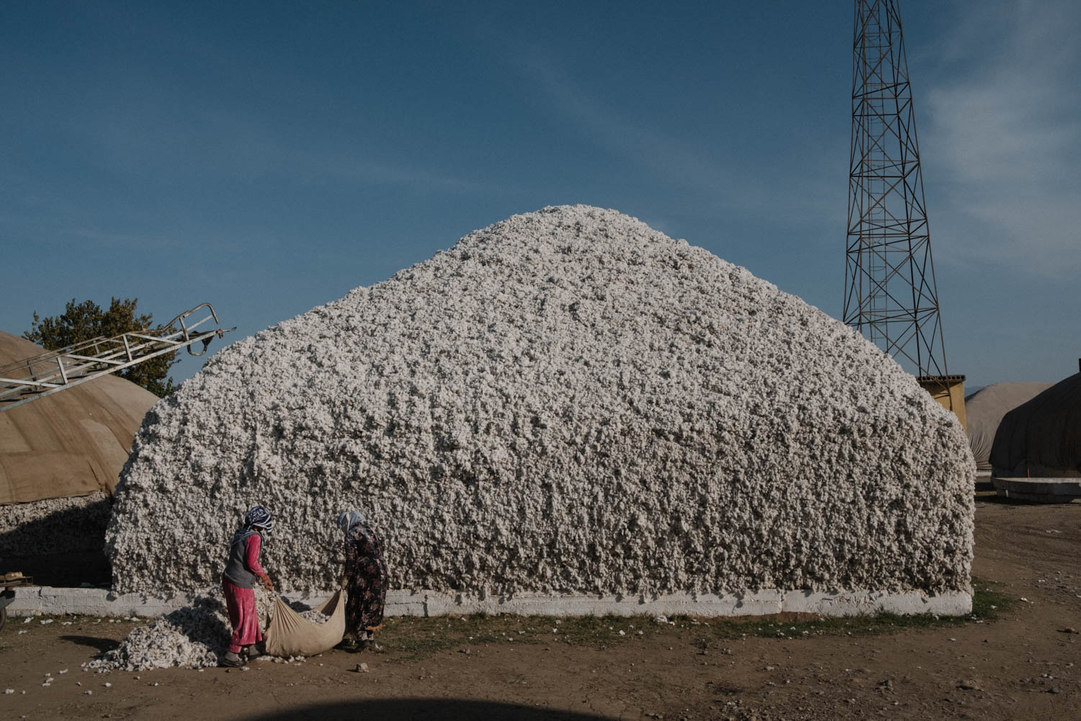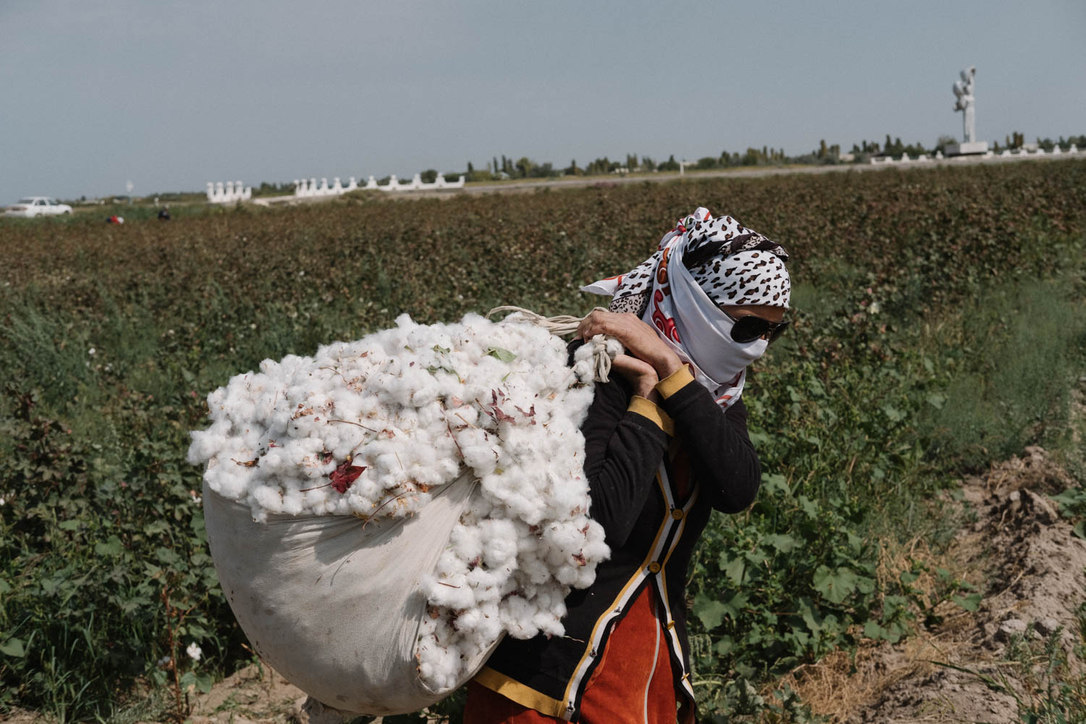Wearable connections: the artists reclaiming Central Asia’s jewellery legacy
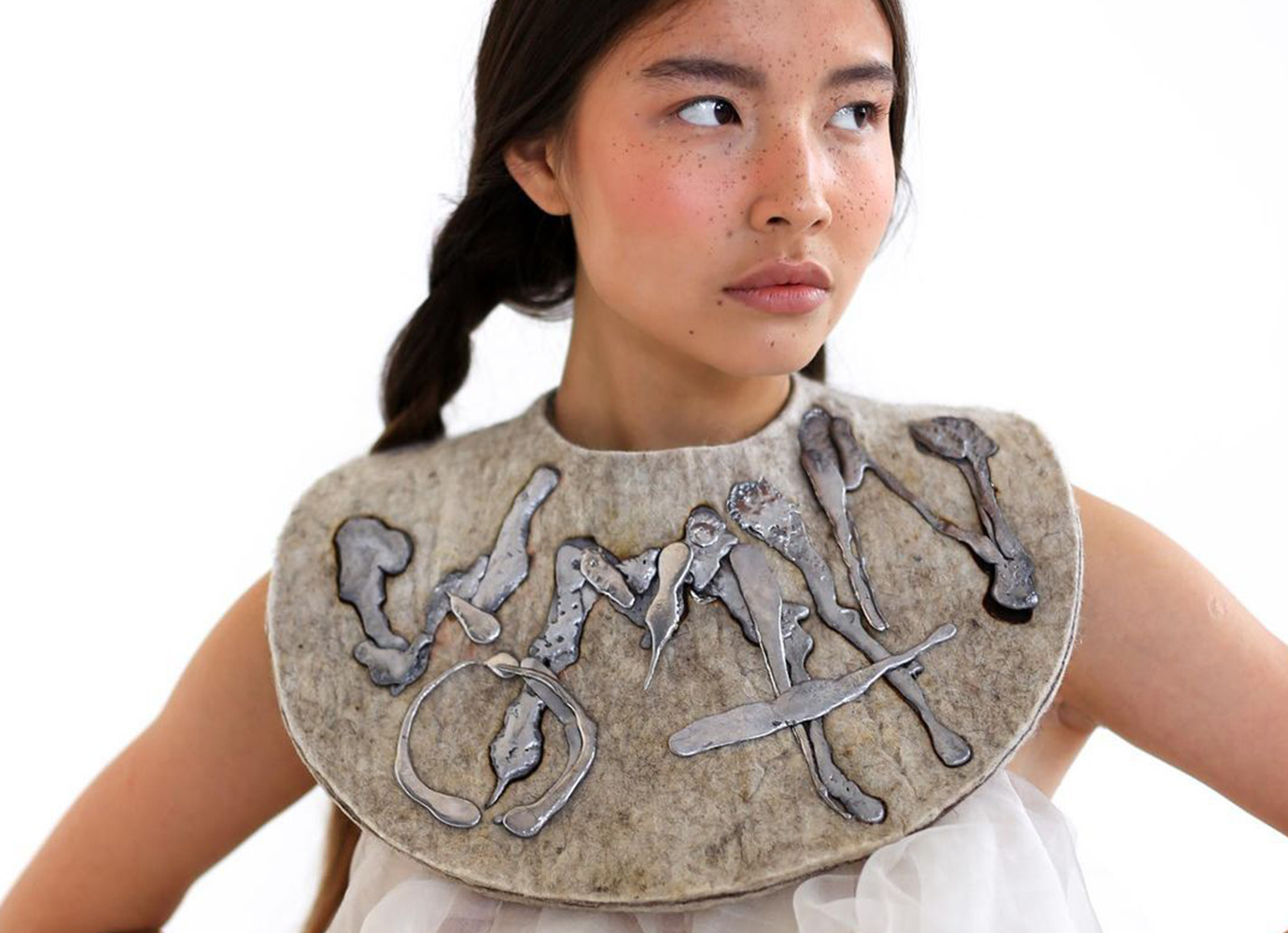
Showing as part of NYC Jewellery Week, News from Central Asia and Sisterhood: Bodies in Proximity unites 15 of Central Asia’s upcoming designers and artisans. Curated by Aida Sulova, the exhibition, which is on display at The Jewelry Library until 11 December, brings together a variety of craftspeople who render global issues, climate change, and collective memory into wearable art.
The Calvert Journal has chosen five of our favourite artists from the new display, each creating jewellery that encapsulates the personal and the political with empathy, hope, and a hint of irony.
Lazy Art Jewellery, Kyrgyzstan
Kyrgyzstan’s Lazy Art residency draws creatives to the shores of the country’s Issyk Kul lake — a crystalline body of water in the Northern Tian Shan mountains. Once there, artists created jewellery made from objects they found on the water’s edge — both lambasting wasteful consumer culture, and adding an anthropogenic edge to the environmental crisis.
For their necklace-like installations, the artists mixed stones, plant life and shells with dropped cigarette butts, broken glass, and plastic labels. Together, they created highly-textured pseudo wearable items that accentuated humanity’s contemporary vices, and the natural imbalance they trigger.
As none of the items were made to be permanent, the necklaces appear at the show as photographs: hanging in the air, or balancing on stones strewn across the floor. But all of these images too were connected by a jute wire — forming an intricate art object all of its own.
Guzel Zakir & Judy Ai, Kazakhstan
A patchwork of textiles, metal work and gypsum objects form Kashgariya, an immersive retrospective on Uyghur culture in Central Asia. After struggling to find information on Uyghur heritage, artists Guzel Zakir and Judy Ai decided to reconstruct a traditional Uyghur woman’s outfit, in a bid to decipher the knowledge it bore. “A woman’s clothes, jewellery, hairstyles, lullabies, and dances are a set of codes — a concentrate of culture worthy of the most devoted study,” the pair believe. Their study picked out the pre-Islamic, Skythian and Buddhist ornaments within the Uyghur attire. Objects from Kashgariya include braided cuffs, typical of Skythian culture. The collection also shows pearl beads, decorative braids and gypsum brooches. Many are hand-painted by Zakir — who is ethnic Uyghur herself — with elements from frescoes inside the Beziklik cave in China’s Xinjiang province.
Altynai Osmoeva, Kyrgyzstan
A graduate of London’s prestigious Central Saint Martins college, Altynai Osmoeva explores Kyrgyzstan’s versatile heritage through sculpture, fabric, metal, light, sound and video. The wearable objects she presented at NYC Jewelry Week speak out on “the heaviness of legacy, knowledge, and fate”, and how they affect women.” Her handcrafted felt and silk collar bibs are weighted down with cumbersome silver decoration: one which spells out the word “woman”, another which depicts breasts. Meanwhile, the collar bibs themselves — used equally by babies and warriors — are designed to represent fragility, safety and resistance, the juxtapositions that emphasise what it means to be a woman in traditional communities.
Dilyara Kaipova, Uzbekistan
“Every family in Uzbekistan owns an item with a cotton ornament,” says Dilyara Kaipova. She swapped embroidery for porcelain and metalwork to experiment with Uzbekistan’s most ubiquitous national symbol — cotton. She sampled the iconic blue and white cotton motif seen on traditional Uzbek piala teacups to create a set of earrings, rings and a silver amulet for her project, Cotton Curse. Yet while the pieces are seemingly carefree, scratch the surface, and you’ll find an invitation to reflect on the complex reality behind Uzbekistan’s cotton industry. While the plant has inspired endless creativity, its cultivation has also triggered environmental disaster and a legacy of forced labour. “Uzbekistan has been haunted by the cotton curse,” says Kaipova. “The industry remains an integral part of our reality, causing social tension, stagnation and insecurity.”
Humairo Muhammad, Tajikistan
Humairo Muhammad grew up in the 1990s, amid Tajikistan’s civil war. She began creating jewellery in her own personal search for peace. In her work, she turns to her country’s ancient past, and draws heavily from its Zoroastrian heritage. Her latest project draws inspiration from a traditional amulet called a lukhtak, a personalised protective doll that has been handcrafted in Tajikistan for more than 1,000 years. Lukhtaks are traditionally made of wood and fabric: the doll’s face is replaced with a rhombus on female amulets, while a stick topped with a turban will represent male amulets. Muhammad replaced the wooden structure of her dolls with a silver pin, and created a handcrafted enamel plate to stand in as a face. She also finished off the dolls with hard helmets: a tribute to labour migrants, on whom the country’s economy is hugely dependent.




